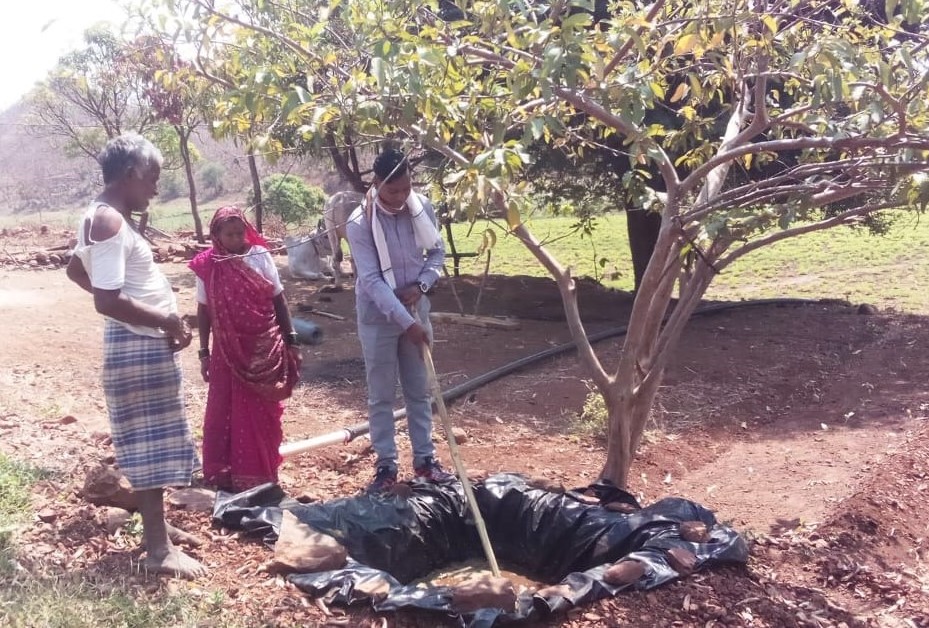As part of its effort to encourage chemical-free farming, the Agriculture Programme team of Samaj Pragati Sahayog (SPS) has been making a study of agricultural methods prevalent in the region. It was during a house-to-house survey in one of its work locations, the Dharani sub-division of Amravati District in Maharashtra, that team member Pankaj Sawalkar met Kusumbai of Laktu village, and asked her about her farming methods.
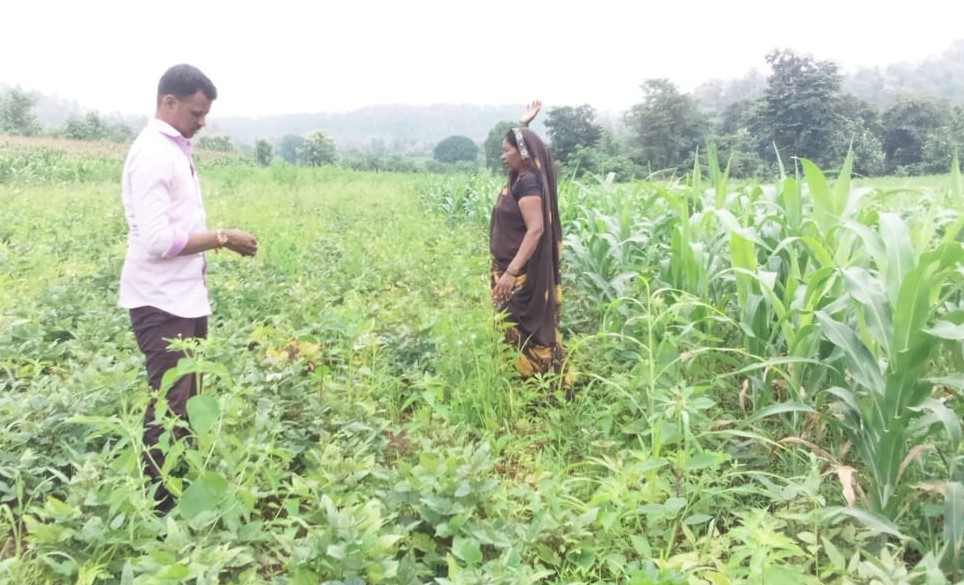
Agriculture Program member discussing with Kusum Bai about her farming
Kusumbai spoke of how it was impossible to manage without chemical pesticides and fertilisers – the more such pesticides one used, the better the harvest. Pest attacks on the crops were, she said, also getting worse every year. She shared her experience of being compelled to buy the most powerful and expensive pesticides to spray on her crops. And yet, these pesticides had barely any effect. Her farming expenses just kept mounting year by year. On the two seasonal crops, kharif and rabi, that she cultivated on her four acres of land, the outlay tended to be between 12 and 15,000 rupees. In addition, there was the farm labour put in by all her family members, as well as the cost of seeds. And if some crop failed, she could not even recover the basic cost, which was causing her a good deal of anxiety.
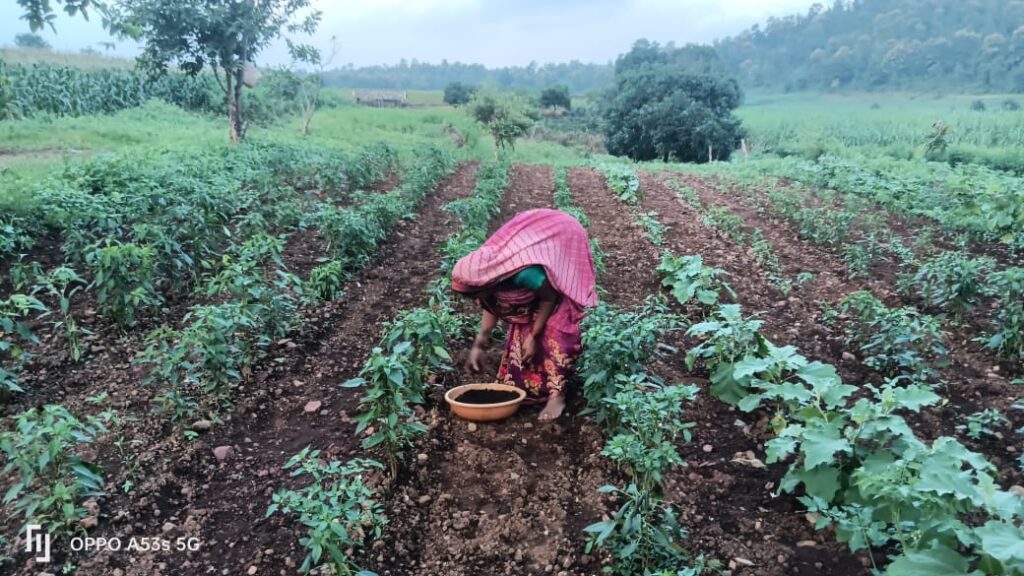
Applying NADEP organic compost to the crops
Pankaj explained to Kusumbai that the extensive use of chemical fertiliser not only makes farming prohibitive, it keeps reducing the fertility of the soil – because the chemicals destroy the living organisms that are essential for its vitality. And then the land gradually turns barren. As for pesticides, not only do they harm the environment, their ill effects are being observed everywhere – in the air and water, on animals, birds, and humans too. Using too much pesticide brings all sorts of health risks, including breathing difficulties, allergies, skin problems, neurological) disorders, even cancer.
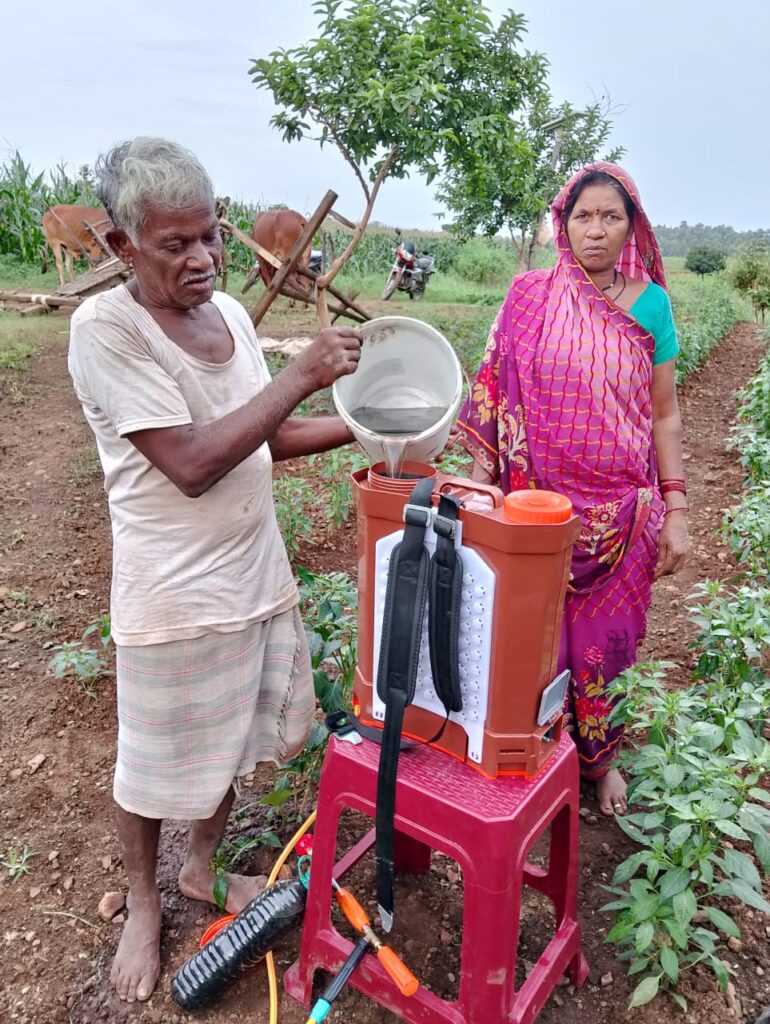
Kusum Bai and her husband Ram Singh preparing to spray organic pest-repellent,
He told her about how SPS was encouraging organic farming through the NPM method, which is not only low-cost but actually benefits people’s health, the environment, and the soil. They were going to be holding monthly meetings in the village to discuss agricultural concerns, and invited her to attend one. The following month, Kusumbai went to the agriculture collective meeting, at which the NPM method of farming without pesticides was explained to everyone. Films about NPM farming made by SPS Community Media[1]were also screened for the collective and in the village. Kusumbai needed no further persuasion; she immediately agreed to join the NPM farming programme.
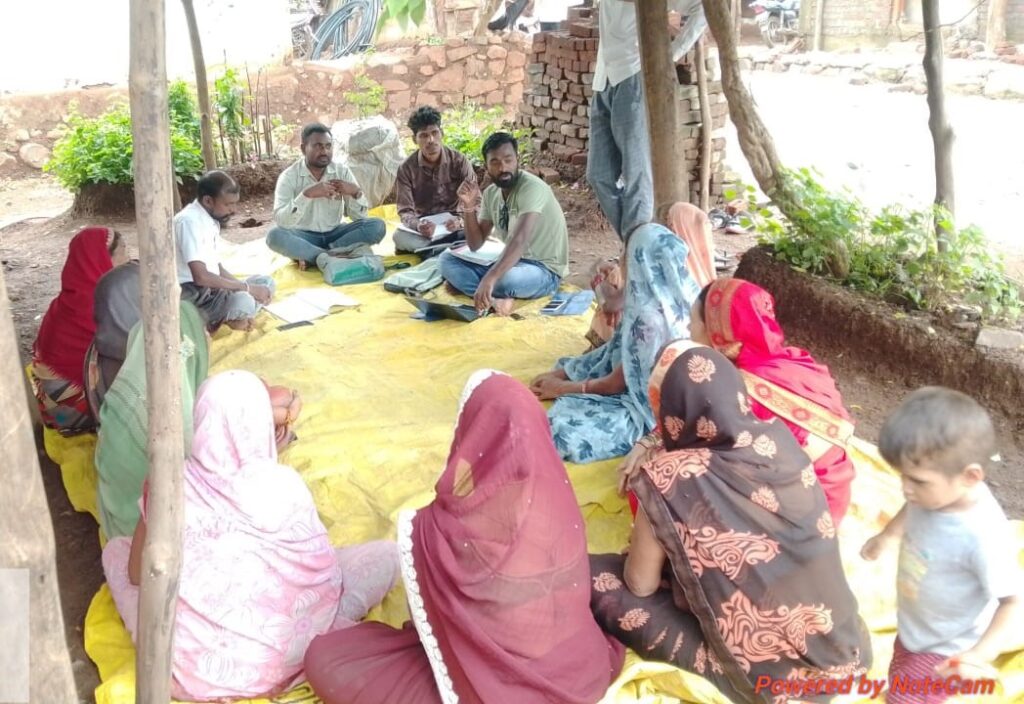
Farmers Group Meeting
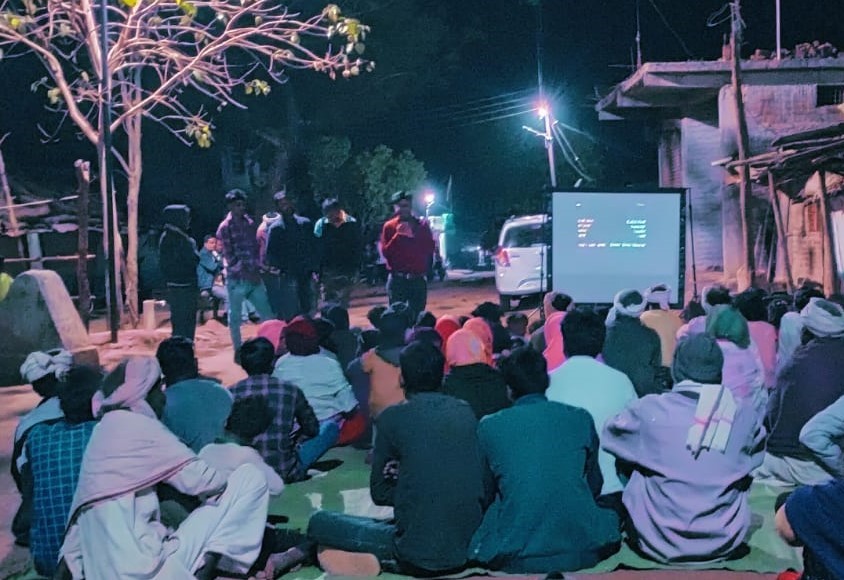
Mobile Cinema Screening in the village
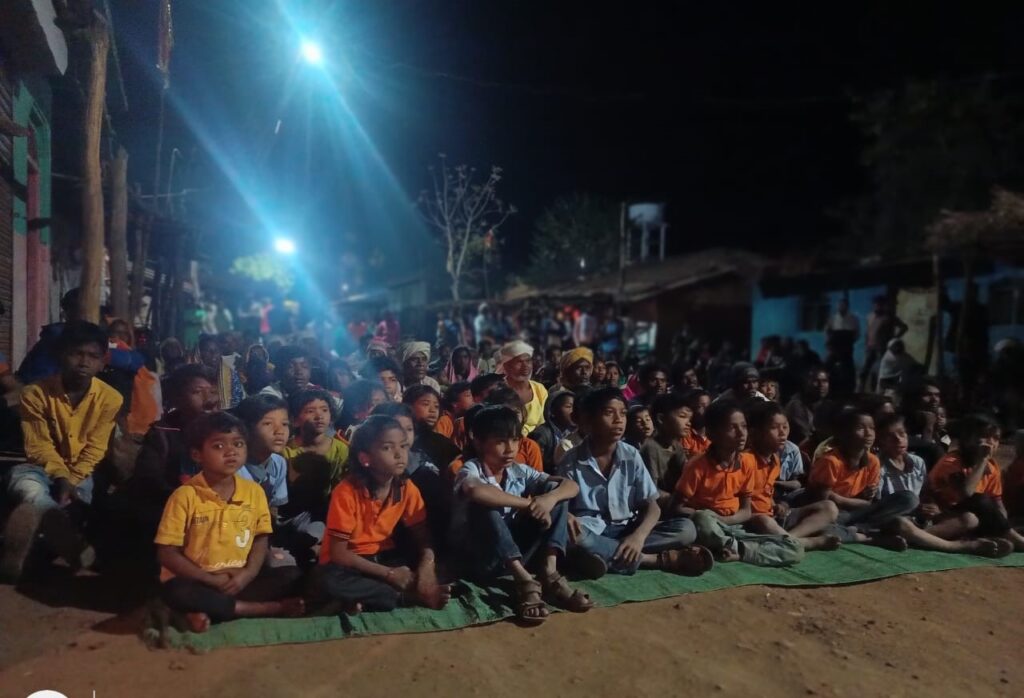
Villagers watching Mobile Cinema
The NADEP[2] organic fertiliser method is a highly significant step in the journey towards organic farming. In the summer months, Kusumbai’s land saw the NADEP construction begin. The organisation supplied 1200 bricks and 5 bags of cement, and paid the mason’s fee of Rs 1200. The dimensions of the structure, built from the ground up, were 12’ long, 5’ wide and 3’ deep. Kusumbai took care of the sand requirement, and contributed her labour during construction.
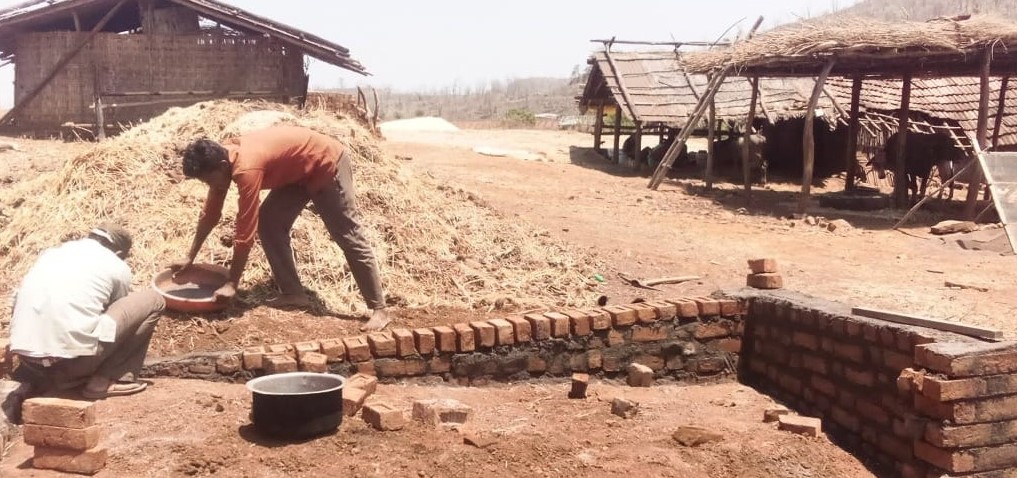
Construction work of NADEP
Once the NADEP was ready, Pankaj explained to Kusumbai how to fill it with layers consisting of the dry plant remnants of her corn, red tuvar, soyabean, wheat, chickpea crops, and the weeds pulled from her fields, spraying the dry layers with cowdung slurry. Once the NADEP is full, it must be coated on top with mud and cowdung, on which water is sprinkled from time to time to keep the moisture in, and to speed up the process. Kusumbai now gets two trolleys’ worth of organic compost for her fields in a year. She makes her own sanjeevak [3][as well, and adds it in the fields. She also makes organic pesticides like “five leaf gruel”[4] and “chhachh” (buttermilk) medicine,[5] which she sprays on her corn, red tuvar, soyabean, chilli and vegetable crops whenever the “pheromone trap”[6] warns her of impending pest attacks. Through the year, in the kharif and rabi seasons, Kusumbai grows a variety of vegetables that she takes to the market to sell – cauliflower, eggplant, okra, tomatoes, long beans, spinach. In earlier times, she would spend Rs 5 - 6,000 annually on pesticides to protect her vegetables. Today, she saves not only that entire sum, but her sanjeevak and the NADEP enable her to save what she would have spent on chemical fertilisers. In this way, her agricultre input costs have come down by roughly Rs 9,000. Her soyabean, corn and red tuvar are growing better, and the soil in her fields is becoming more fertile.
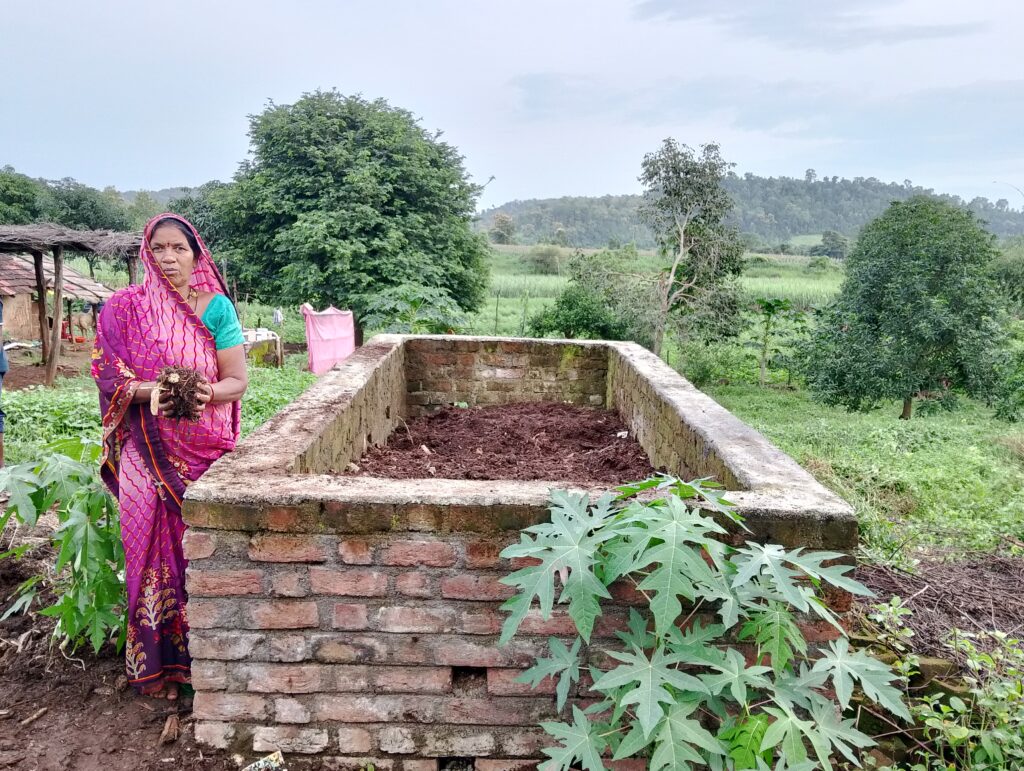
Kusum Bai showing NADEP compost
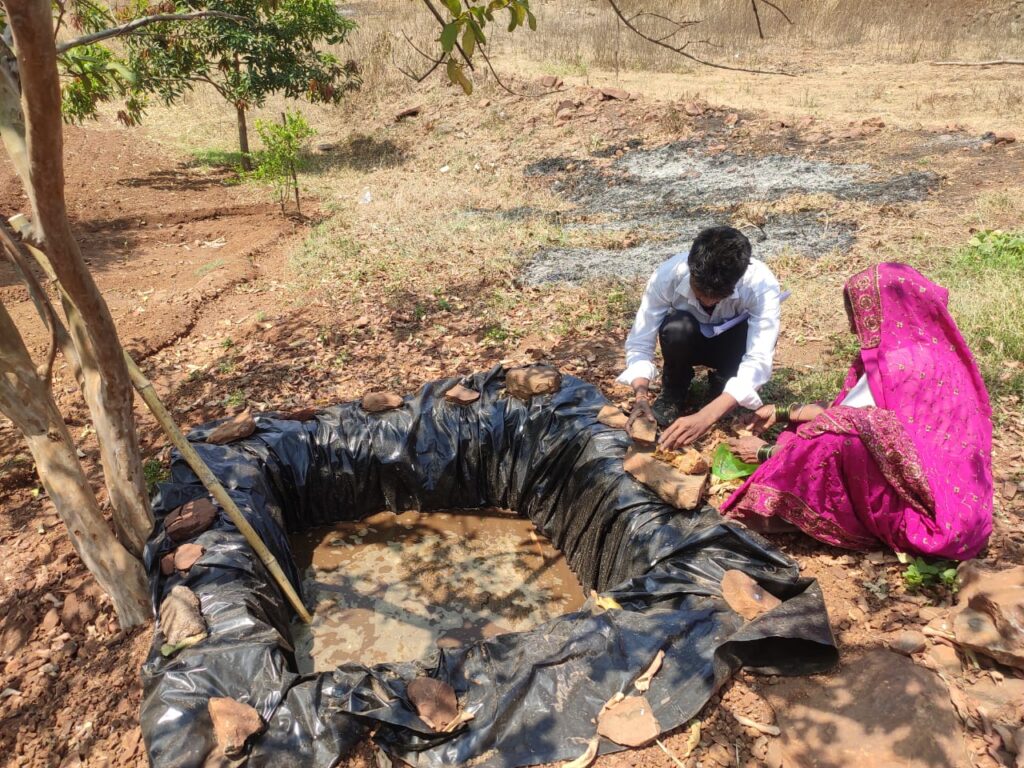
Sanjeevak bio-fertilizer
Since 2017, SPS has been working to encourage NPM farming in the Melghat region, where 1973 farmers are now associated with the programme. Across the organisation’s work locations, a total of 16,998 farmers have adopted these organic farming methods. Kusumbai, too, is one of these farmers, who has been engaged in NPM farming for two years – with the bonus that her family now eats food that is free of toxins.
[1] SPS Community Media is a full-time media production unit, translating SPS’s ideas, practices, and experiences into films, art, and audio stories in an interactive partnership with the community. The core team comprises local people from the area.
[2] The NADEP fertiliser-making process makes use of a range of organic leftover materials found in the fields. “NADEP” is an acronym for Narayan Deorao Pandharipande, the farmer who invented this method. He is fondly referred to as “Nadep Kaka (Uncle)”.
[3] This bioactive fertiliser increases the countless microorganisms in the soil which provide growing plants with essential nutrients, and leads to more fertile soil and higher crop yields.
[4] Certain pest-resistant tree leaves are chopped and mixed with cow urine and water. This mash is allowed to stand for 8 to 10 days, then boiled, after which it is ready to be sprinkled.
[5] A piece of copper is immersed in buttermilk. When the liquid turns pale green in colour, it is ready to be used as a pesticide..
[6] The pheromone trap has a capsule that mimics the scent of a type of female moth that lures and traps the male. It acts as an early warning system for attacks on crops by common pests.
Writer: Iqbal Hussain
Source: Pankaj Sawalkar
Photography: Pankaj Sawalkar
Translation (Hindi to English): Smriti Nevatia
Guidance: Pinky Brahma Choudhary
Page Layout: Roshani Chouhan

